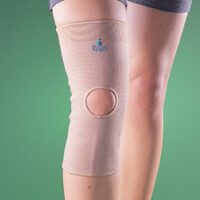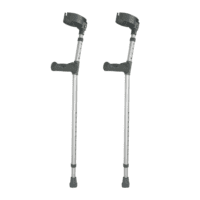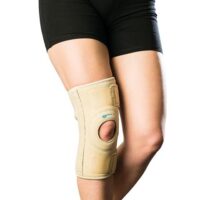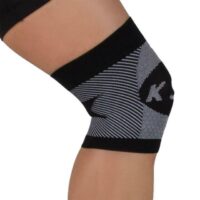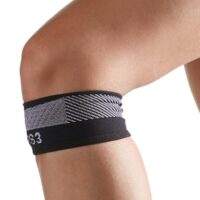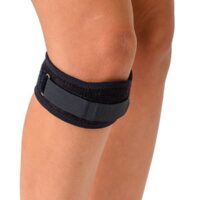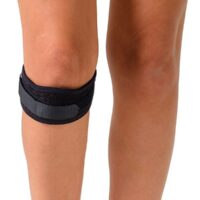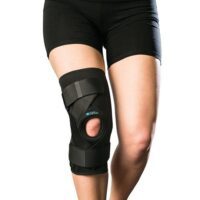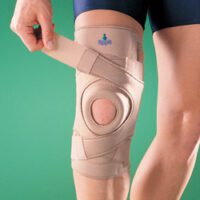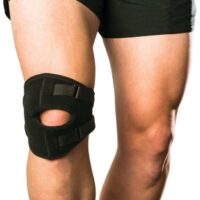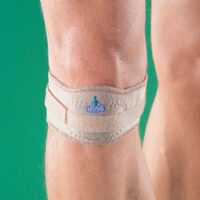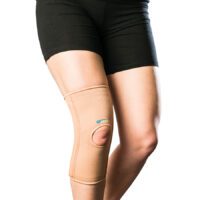Chondromalacia Patella
Article by John Miller

What is Chondromalacia Patella?
Chondromalacia patella is a condition that causes anterior knee pain, commonly affecting young, otherwise healthy athletes. Chondromalacia patella occurs when the undersurface of the kneecap becomes irritated, leading to cartilage softening. The kneecap, or patella, is usually covered with smooth cartilage, allowing it to glide smoothly during joint movement. However, the kneecap may rub against one side of the knee joint in individuals with malalignment issues, causing irritation and knee pain.
When knee pain occurs without cartilage softening, medical professionals refer to it as patellofemoral pain syndrome.
What are the High-Risk Sports?
High-risk sports include football, cycling, rowing, tennis, ballet, equestrian, gymnastics, volleyball, weightlifting, skiing, snowboarding, and running. These sports involve running, jumping, squatting, and landing, which increases the likelihood of experiencing kneecap pain. Additionally, even non-sporting individuals may experience kneecap pain when climbing up or down stairs.
The condition typically arises from either an acute injury to the patella joint surface or chronic friction between the patella and the groove in the femur (thigh bone), occurring during knee bending. Potential causes of this condition include tight lateral knee structures like the ITB, weak medial quadriceps (specifically the vastus medialis oblique – VMO), overpronation of the feet, and weak lateral hip rotator muscles. These muscle imbalances result in rotational instability, causing the patella to align laterally in the femoral groove and leading to pain due to malalignment.
The good news is that physiotherapy assessment and intervention can effectively address patellar maltracking. Many patients experience relief from pain after just one treatment session, and they can often leave the clinic pain-free. Please consult with a physiotherapist for proper guidance and advice.
Chondromalacia Patella Treatment
Physiotherapy intervention has been confirmed by researchers as a highly effective solution, both in the short and long term, for treating kneecap pain associated with chondromalacia patella.
Exercise-based treatments have shown favourable results in over 90% of individuals suffering from patellofemoral syndrome. It is common for patients to experience significant pain relief and become pain-free within six weeks of starting a rehabilitation program guided by a physiotherapist.
In cases where conservative treatment does not respond, an orthopaedic surgeon may consider surgery to repair severely damaged or arthritic joint surfaces.
The primary goal of treatment is to reduce pain and inflammation in the short term and, more importantly, to address the condition’s underlying cause to prevent its recurrence in the long term.
The progression from one stage of treatment to the next depends on individual factors. Your physiotherapist will determine progress during the clinical assessment. It is essential to carefully monitor exercise progression, as advancing too soon to the next level can lead to reinjury and delay recovery.
The treatment process involves several phases:
Phase 1 – Injury Protection:
This phase focuses on pain relief and includes rest, ice application, and protective measures such as kinesiology supportive taping. During this phase, physiotherapists may use pain-relieving techniques, joint mobilisations, massage, strapping, and acupuncture.
Phase 2: Regaining Full Range of Passive Motion:
Range of motion exercises and techniques are employed to restore normal kneecap and knee joint movement.
Phase 3: Restoring Full Muscle Length:
Stretching exercises and foam rollers will address tight thigh, hamstring, and calf muscles that may be causing tension or pressure on the kneecap.
Phase 4: Normalising Quadriceps Muscle Balance:
The physiotherapist assesses and addresses any muscle imbalances in the quadriceps, usually through a specific knee strengthening program.
Phase 5: Hip and Foot Control
During the treatment process, the physiotherapist assesses foot and hip control to normalise foot and hip biomechanics. They may recommend interventions such as foot orthotics or hip stabilisation programs to improve biomechanics.
Phase 6: Normalising Movement Patterns:
Correcting poor movement habits, such as abnormal gait, jumping, landing, running, or squatting techniques, is essential to prevent a recurrence of kneecap pain.
Phase 7: Restoring High Speed, Power, Proprioception, and Agility:
Balance, proprioception, and sport-specific training are incorporated to prepare individuals for a safe return to high-intensity activities.
Phase 8: Return to Sport:
Sport-specific exercises and a progressed training regime to facilitate a safe and complete return to the chosen sport.
Sometimes, a patellofemoral brace may help as an alternative to taping for managing chondromalacia patella.
Conclusion
In conclusion, chondromalacia patella can cause knee pain, especially in high-risk sports. However, physiotherapy intervention offers effective treatment options.
Exercise-based treatments deliver positive outcomes for over 90% of individuals, while doctors consider surgery for severe cases. Consulting a physiotherapist is vital in addressing the chondromalacia patella and achieving a successful recovery.
Related Articles
- Effective Management Of Fat Pad Syndrome: Offers insights into knee conditions like Chondromalacia Patella and treatment options.
- Patella Enthesopathy: Discusses treatments for knee pain arising from various conditions, including Chondromalacia Patella.
- Knee Bursitis: Explains conditions leading to knee pain, including Chondromalacia Patella, and treatment methods.
- Patellar Tendinopathy: Provides information on conditions causing kneecap pain, relevant for those with Chondromalacia Patella.
- Patellofemoral Pain Syndrome (PFPS): Offers a comprehensive overview of kneecap pain, including conditions like Chondromalacia Patella.
Rochedale - Call 38410277
Book Online: RochedaleSalisbury - Call 32751044
Book Online: SalisburySandgate - Call 32691122
Book Online: SandgateSocial Media
Stay connected with us on social media for valuable tips on managing patellar pain and improving knee health. Access advice from experienced physiotherapists to keep your body moving smoothly.










